icon
password
Multi-select
tags
ID
type
status
slug
summary
category
date
Author
URL
This is a smartwatch that allows parents to eavesdrop on their children remotely, but all the children like it very much. It sounds incredible, but it's true.
“Double 11 Shopping Festival is coming, and my children ask me for imoo(小天才) Watch Phone Z6.”
“Ha ha! So is my child, who insists that I buy imoo, not even Apple Watch. “
“Why does it have to be imoo?”
“My child said that many classmates are using it.”
The above conversation took place among the parents of a primary school in Shenzhen. Imoo(小天才, literal translation should be “little genius”) is a smartwatch brand, and you might think this is another fake version of Apple Watch from China.
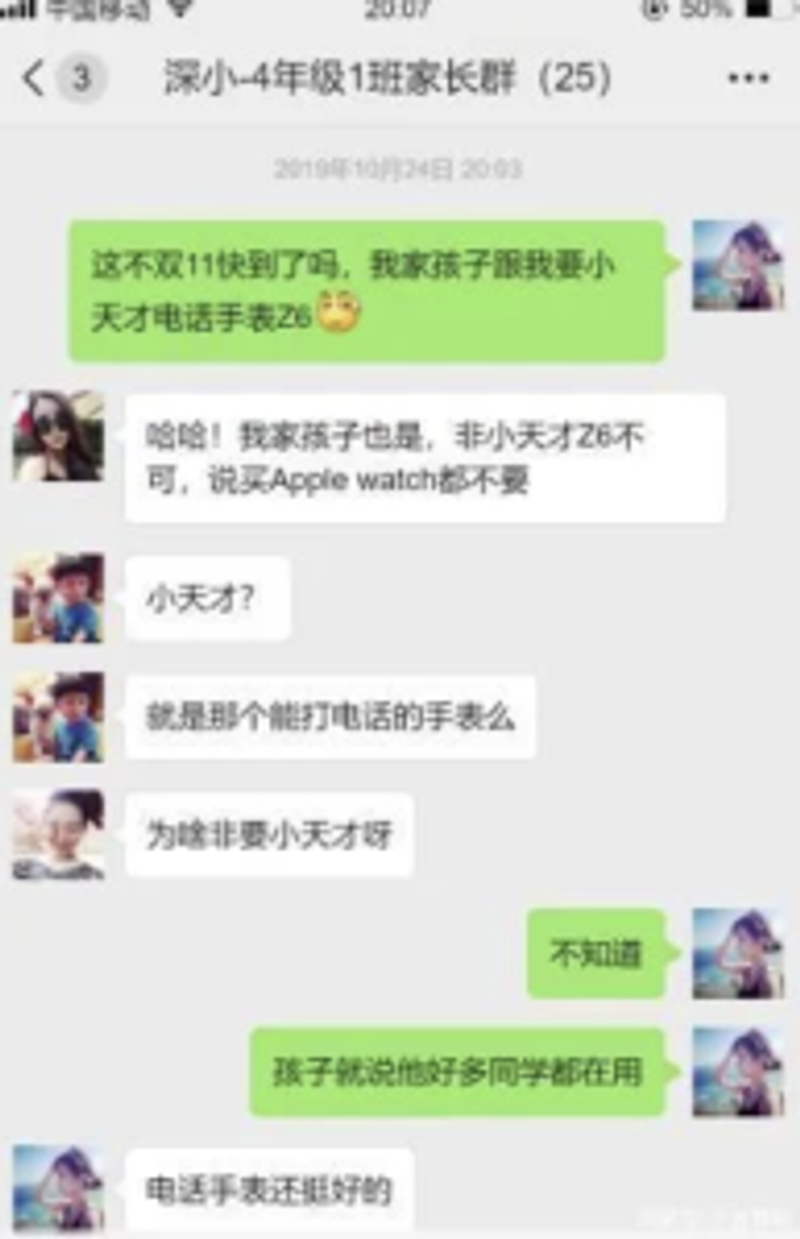
A screenshot of the chat above
But in fact, when it comes to fake Apple Watch, most Chinese consumers think of Xiaomi’s smartwatch. For many Chinese, imoo is a very unfamiliar brand, as long as they don’t have a child who is in primary school.
But for Chinese children, the situation is completely different. This smartwatch brand which focuses on children, has replaced Apple Watch and Xiaomi as the most popular wearable brand among primary and junior high school students.
“If your child doesn’t have an imoo smartwatch, your child will even be isolated in the class,” one Chinese media reported.
So how on earth did the imoo do this?
What does the imoo watch look like?
As you might expect, smart devices designed for children are mostly boring for adults, imoo is no exception.
It has many kinds of appearance, but most of them have an exaggerated plastic shell and a screen with low level resolution.
It has a typical children’s product style, full of a variety of colorful and prominent icons. Its interface is a little childish for adult users. Although its operating system is Android, yet it doesn`t look like one. Before jailbreak, you can’t install extra games or software for it.
On the most expensive imoo Z6, its screen is rotatable, which means your child can use this watch to pose in the classic Detective Conan pose. The most expensive version has two cameras, the cheaper one has one, and the cheapest one doesn’t. Children use these cameras to take photos, videos or make video calls with their friends and parents.
All models can plug in a SIM card and connect to 3G or 4G networks because these watches are designed to be used without WIFI and mobile phones, such as schools.
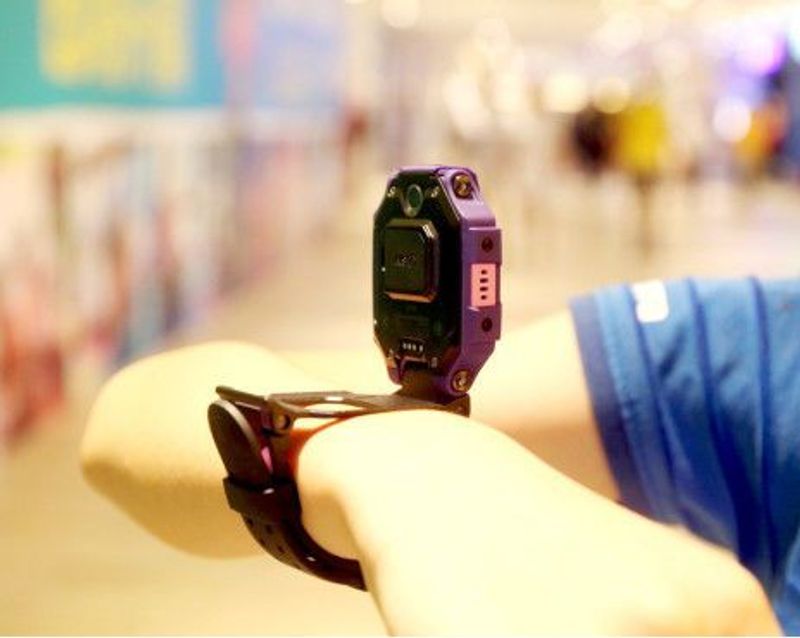
imoo watch phone Z6
In primary schools in China, the use of mobile phones is restricted or prohibited in most cases. In particular, if students check the mobile phone screen during class, it may lead to the confiscation of the mobile phone. But for such smartwatches, teachers tend to turn a blind eye.
Parents can tie their children’s Alipay accounts to imoo watches so that children can use the money in Alipay to buy goods directly or take the subway, which is very important for China, as where is gradually entering the era of mobile payment.
Apart from that, there is nothing more to say.
The secret of success: Social Network
So far, you may wonder why this mediocre product can dominate China’s market for children’s wearable devices.
Many Chinese were also confused until they realized that imoo was not actually selling a series of smartwatches but a social network dedicated to children.
Imoo is popular among children not because its products are better than Apple Watch, but because of the social network. Just as it is difficult for Chinese to leave Wechat and it is difficult for Americans to leave Facebook.
Previously on: most Chinese parents are reluctant to buy smartphones for their children below junior high school, but there is still a need for children to use the Internet to socialize. At this time, imoo watches became almost their only choice.
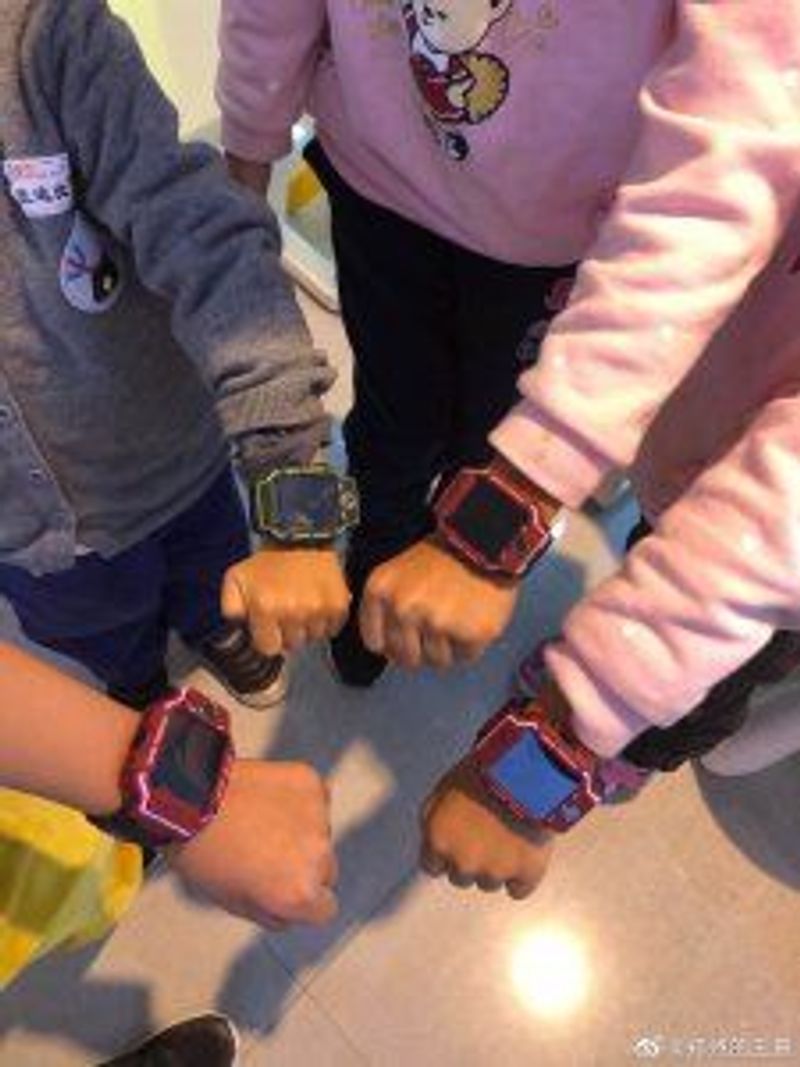
Chinese children show off their imoo watch at the party via weibo
In fact, imoo was successful in the same way as Wechat and Facebook: initially, when imoo started selling smartwatches for children, there were many competitors on the market. But when imoo released a children’s social network that could only run on its own products, it monopolized the market.
Imoo’s exclusive social network is called Micro Chat, which is basically a Wechat for small screens. Children can use it to chat with their friends and send voice, pictures and videos during the chat. It also includes a WeChat Moment-like function that can share pictures with all their children.
The way the exclusive social network asks for friends is straightforward: as long as two imoo watches are bumped together, the friend request will appear on both screens.
Adult users know that this is just another NFC trick, but this action is so special for primary school students that other smartwatches are no longer attractive.
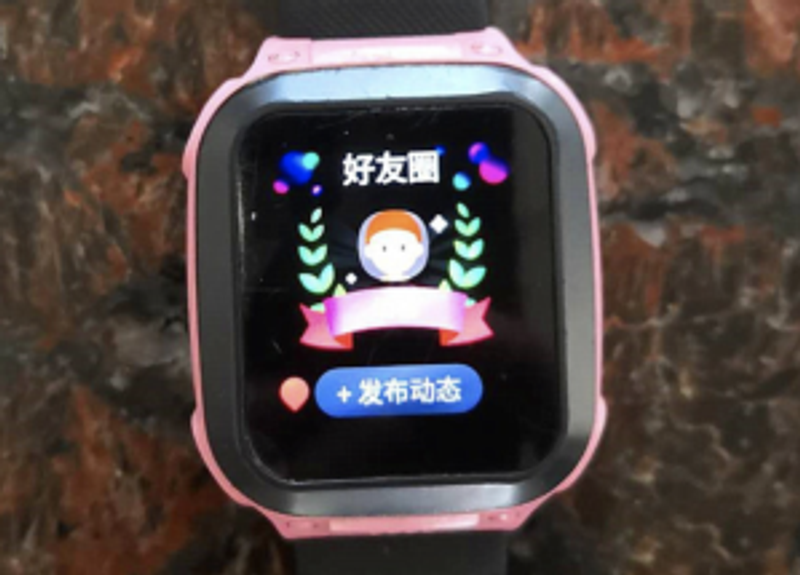
Social Networks in imoo
With this unique social network, imoo has swept the market for children’s wearable smart devices in China. According to IDC (in Chinese), immo (BBK) ranks fourth in China’s wearable market in 2019, followed by Huawei, Xiaomi and Apple. For the whole of 2019, they sold 6,044,000 devices.
Another evidence that social networking is the secret to imoo’s success is that their sales fell sharply in 2020. The reason is simple: due to the influence of COVID-19, Chinese students do not have to go to school for almost half a year.
Such a less functional smartwatch is no longer addictive when children stay at home and are allowed to use smartphones or tablets to take online classes.
But the strategy has been so successful that some Chinese business media believe that imoo could replace Wechat as China’s next-generation Internet users grow. But for now, there is still a lot of uncertainty about this future.
The secret to getting parents to pay: round-the-clock tracking
All products for children have a fatal flaw: if they only attract children, it is difficult to get parents to pay.
This is especially true for smart devices.
Because of the exam-oriented education culture, Chinese parents regarded digital devices as enemies decades ago. Because any happiness that digital devices can bring to children does not seem to be helpful to their academic performance, such as listening to music, watching cartoons, reading novels and even playing games.
Many parents do not buy smartphones for their children because they are worried that their children will indulge in the games and delay their academic performance.
So, in fact, there is a contradiction in any digital product designed for children: if the device is really attractive to children, then their parents will not pay. If this product makes parents willing to pay, it is likely to be very uesless for their children.
Imoo watches found a way to balance this. As mentioned above, it does not provide games for children, but attracts children to buy by “kidnapping” their social relationships. Most parents don’t think there’s anything wrong with this. On the other hand, it also tries to tap parents’ demand for wearables, simply control over their children.
Compared with the crude “parental control” of other digital devices, the parental control App of imoo watches is like a complete console for all functions of the watch. And the watch itself is just a simplified version. via QQ News
Although all watches can operate independently from the phone, everything children do on the watch will be recorded, and parents can check everything through a simple App. This includes checking the child’s payment history through the watch, web browsing history, and movement track (through GPS).
It even provides a remote monitoring function. Parents can remotely turn on the microphone of their child’s watch and listen to what is going on around the child. All this will not be known by their children.
This is reminiscent of Black Mirror season 4 episode 2 “Arkangel“, which describes a cyber artificial eye that allows parents to monitor their children forever, eventually leads to tragedy.
However, at least so far, things have not come to this stage.
Many Chinese parents believe that buying imoo or other children’s smartwatches with similar tracking functions can significantly protect their children from being abducted and trafficed. This give them stronger buying motive.
Imoo originated from BBK. It is not a novice in this field.
Many Chinese consumers are shocked by the rise of imoo, but in fact the brand does not rise from the ground.
In addition to Huawei and Xiaomi, several Chinese mobile phone brands have a common investor, including BBK. I have described the relationship between these companies in the article This man created BBK, OPPO, VIVO, OnePlus and more, and imoo is obviously the one I missed.
When Duan Yongping founded BBK, the company focused on producing digital devices for K12 students, such as electronic dictionaries. When BBK moved into the mobile phone business and renamed its mobile business VIVO, the business of making digital devices for students and children was packaged into a new company called imoo.
Imoo was founded in 2011 as a sub-brand of BBK. At first, it did not produce smartwatches, but some e-learning devices. But in 2015, as China’s wearable market entered fierce competition, imoo began to try to produce children’s smartwatches.
Compared with being one of the many competitors in the smartphone field, BBK is actually very good at producing digital products that satisfy both Chinese children and parents. It had no rival in this field.
In the 1990s, because of the popularity of pop music tapes, almost all middle school students wanted to have a tape recorder. But as we mentioned before, Chinese parents thought that indulging in pop music would only lower their students’ test scores.
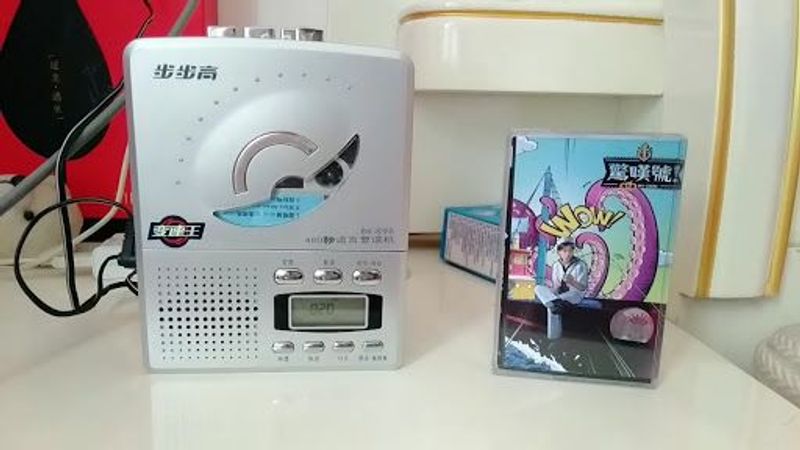
BBK Repeater and Music tapes of Jay Chou via bilibili
At that time, BBK invented the Repeater (复读机, A device name invented by BBK, not the kind of device used to build a local area network), which is basically just a tape recorder that enhances the function of “A to B Repeat”.
It allows the user to select a starting point and an end point on the tape and repeat the sound over and over again. BBK packaged it as a “necessary equipment for learning English” in the advertisement, encouraging many parents to pay for it. Of course, all children are happy to have such a Repeater, because it means they can listen to pop music tapes.
Later, BBK also entered the electronic dictionary market. Electronic dictionaries are handheld digital devices optimized for language learning. In the absence of WIFI and cellular networks, manufacturers need to store large amounts of content in these devices for users before they leave the factory. For enthusiasts of this kind of equipment, Casio is a leader in this field, and it still is even now.
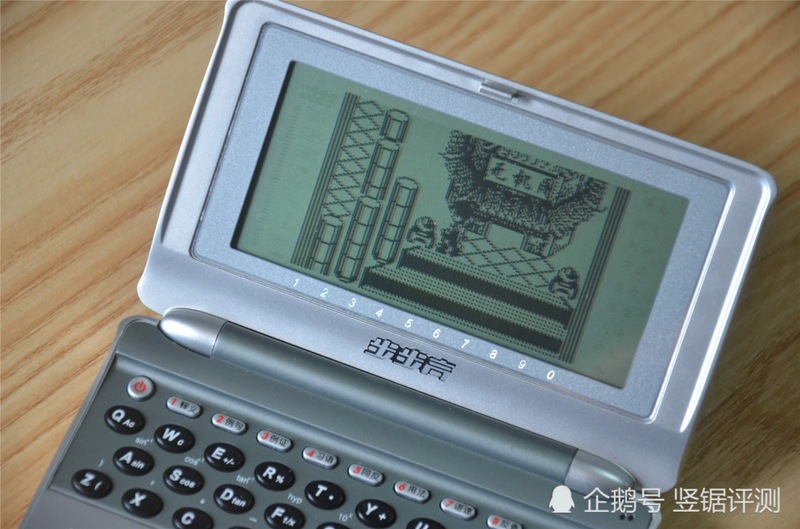
BBK electronic dictionary and the “most famous” RPG game of that era.
But Casio has never won in the Chinese market because it is really a learning device that lacks the gaming features that students really want.
Unlike Casio, BBK provides not only the boring features that electronic dictionaries should have-authoritative dictionaries in dozens of languages-but also the ability to listen music, play games, read e-books and keep electronic pets. It never advertises for entertainment, but children always learn about those functions from somewhere else. When their parents decided to buy an electronic dictionary and asked their children which brand they wanted, BBK stood out.

BBK Electronic Point Reading Machine
After Repeater and the electronic dictionary, BBK also launched a series of Electronic Point Reading Machine, a children’s book with integrated circuits. It doesn’t have a screen, but it packs interactive pages. The reader clicks the switch on the page with a specific pen, and the cover of the book makes a sound.
In foreign countries, similar Reading Machine is used to read the Bible by blind or illiterate protestants. But BBK has turned the product into a learning tool for children to help them learn.
But soon, the product was replaced by the iPad and a large number of cheap Android tablets. The following story is the imoo smartwatch described in this article.
Although BBK’s story in this field is not as legendary as other Chinese corporate stories, but Repeater, Electronic Dictionaries, Electronic Point Reading Machine and imoo Smartwatches have defined many Chinese’s childhood perception of digital products over the past 30 years.
That’s pretty awesome too, isn’t it?
- Author:NotionNext
- URL:https://pandayoo.com/2020/12/19/how-does-an-apple-watch-copycat-for-children-occupy-the-chinese-market
- Copyright:All articles in this blog, except for special statements, adopt BY-NC-SA agreement. Please indicate the source!